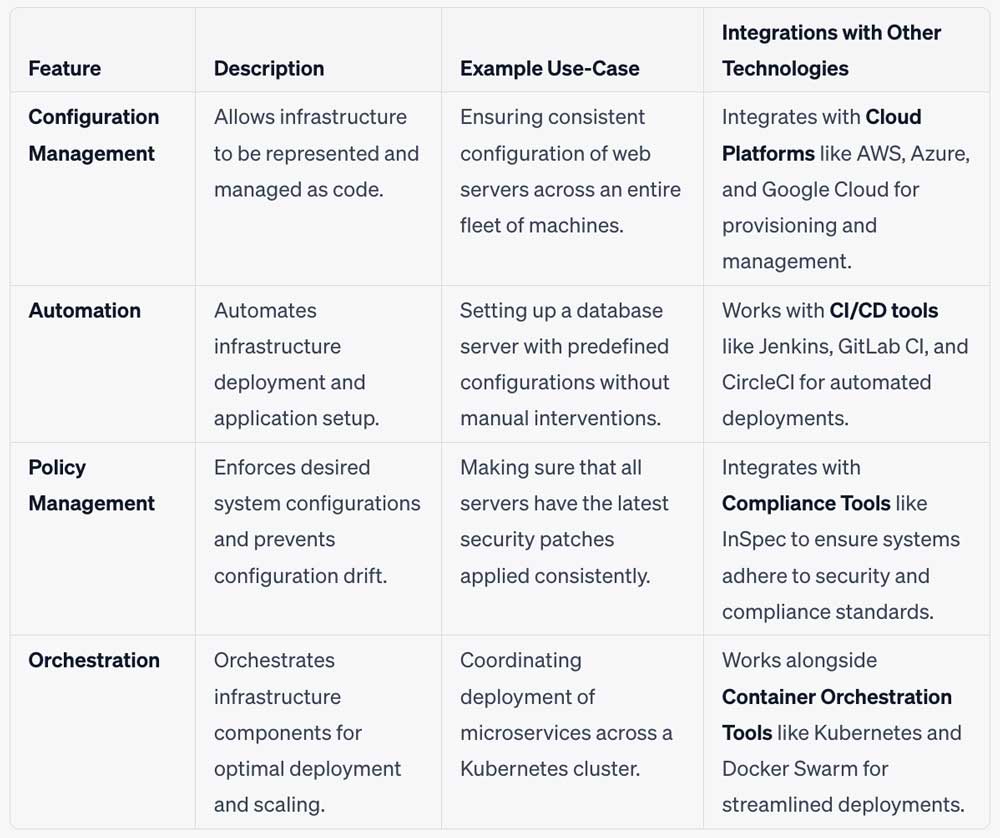Chef is a powerful configuration management and automation platform that transforms infrastructure into code. By allowing infrastructure to be defined and managed as code, Chef facilitates automated, consistent, and scalable systems management, ranging from configuring individual servers to orchestrating complex multi-cloud environments.
Chef, created by Opscode in 2009, is a robust configuration management and automation platform that codifies infrastructure. Embracing the philosophy of “infrastructure as code,” Chef empowers organizations to automate the provisioning and management of infrastructure, ensuring consistent deployments across diverse environments. By converting infrastructure rules and configurations into reusable code, Chef facilitates scalable, repeatable, and automated IT processes, streamlining tasks from configuring individual servers to orchestrating complex multi-cloud deployments.
chef-client to pull configurations from the Chef server.Chef is comprised of several features that allow it to manage and automate app deployments. The table below is an overview of the core features of Chef along with examples of how those features are implemented.

Install Chef Workstation on your local machine. This provides you with tools like knife, chef, and kitchen.
brew cask install chef/chef/chef-workstationcurl https://omnitruck.chef.io/install.sh | sudo bash -s -- -P chef-workstationWhile Chef offers a hosted Chef server, you can also set up your own. Install the Chef server on a machine, and then configure it:
bashCopy code
sudo chef-server-ctl reconfigure
After configuration, ensure services are running:
bashCopy code
sudo chef-server-ctl status
Use the knife tool to bootstrap a new node, allowing it to be managed by Chef:
bashCopy code
knife bootstrap ADDRESS -N NODE_NAME -x USERNAME --sudo
Replace ADDRESS, NODE_NAME, and USERNAME with appropriate values for your environment.
Create a new cookbook:
bashCopy code
chef generate cookbook my_cookbook
This generates a cookbook directory structure. You can then add recipes to the recipes directory.
Once your cookbook is ready, upload it to the Chef server:
bashCopy code
knife cookbook upload my_cookbook
On the managed node, run the Chef client to pull down the latest recipes and apply them:
bashCopy code
sudo chef-client
Chef is a powerful DevOps tool that emphasizes the concept of infrastructure as code. It offers a consistent way to manage and configure infrastructure across varied environments. By mastering Chef, teams can ensure streamlined deployment processes, consistent environments, and automated workflows, leading to more reliable and faster software delivery.